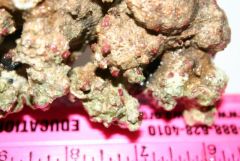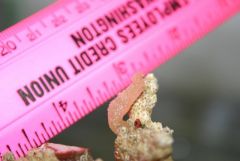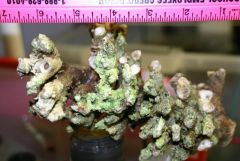
fab
BB Participant-
Posts
343 -
Joined
-
Last visited
Content Type
Profiles
Forums
Gallery
Events
Store
Everything posted by fab
-
If you can touch the metal flashing for a few seconds then it is between 150 and 200 degrees F. 150 degrees F is the nominal threshold of pain for humans. 200 degrees F is too hot to touch for more than a blink. You are right the kindling temperature for wood is about 450 deg F. Your wood might not like the heat and may give up all it's moisture content and develop cracks, but it should not be anywhere near its kindling temperature if it is no hotter that what you touched. By the way, what does "Freaking Hot" mean? Is it a value on a new temperature scale? fab
-
Troll, I will not represent that what I say next is actually correct or not. I know that I do not know. It is only my surmise and speculation. It seems to me that the ratio of rock volume, or weight (as a poor proxy), to water volume does not indicate the processing capacity of a tank to be cycled. Rather it should only be the volume of rock itself. However, the rate of processing would seem to be affected by the ratio of the rock to water volume. If I had to cycle 100 lbs of rock, would I be better off doing it in a 200 gallon tank, a 100 gallon tank, a 50 gallon tank or a 25 gallon tank? Consider the question while allowing that protein skimming is provided in each case, consistent with the volume of each tank. Holding the amount of rock constant, as we consider each tank size in this mind experiment, would hold constant the total amount of bacteria available to process whatever amount of decomposition the set amount of rock has that must be processed. By reducing the volume of water from one case to the next, the concentration of the decomposition products would increase, but not the total number of bacteria available to do the processing. I don't know of any advantage to the cycling process of forcing a higher concentration of the offending chemistry that attends the decomposition process. In fact, expecting there to be an advantage goes against the idea of doing water changes while cycling. On the other hand, it seems to me that some critters might survive the cycling process in the least concentrated environment of the largest volume tank, thereby reducing the amount of "secondary" die-off that would otherwise have to be processed by the number of bacteria that is hosted by the set amount of rock. So, my speculation leads me to conclude that your claim is at least counterintuitive, if not incorrect. Shy knowlege to the contrary, I am quite curious as to where is my logic is flawed? Can someone, please, help me on this? fab
-
It doen't matter who is on the board at 3 am or whenever I'm on the board. With regard to my own posts all that matters to me is who is on the boards after I am, and who reply to my posts with valuable info and insight. fab
-
-
ID Help? ... Red buds on new live rock with ruler for sizing
fab posted a gallery image in Hitchhikers
-
-
Troll, When you said, "...low ratio then you might notice some spikes," did you mean "high ratio?" In other words did you mean, "if you have too much rock for the amount of water in the system then you might notice some spikes?" fab
-
Unless the live rock was out of Steve's tank for more than a few hours and was allowed to dry out some, you might not see any noticeable cycling behavior. Cycling is just a fancy name for letting decomposition processes go to completion and for the direct and indirect products of decomposition to make their way out of your system. No die-off, no decomposition. No decomposition, no ammonium spike. No ammonium spike, no nitrate spike. No spikes, no cycling. No kidding. I'd bet Steve Outlaw's tank has been maintained at high water quality and that your new live rock had no appreciable die-off, at least not appreciable relative to the volume of your system and to its capacity to eliminate a small bump in ammonium and nitrates. You are probably done with cycling that rock. ... and a free star to boot! ... and even an extra arm!! fab
-
Upgrading from 75G - will current eqiupment cut it?
fab replied to madmax7774's topic in General Discussion
For a bit of a boost in cooling consider putting a fairly simple scheme together that draws air across the length of the tank and exhausts it from the hood. Vertical exhaust can work. Use some horizontal pipes with a bend to go vertical or route them elsewhere for the exhaust. You can put the fans on a thermostat control to draw air out only when the tank temperature gets above a threshold value. This might keep you out of "chiller territory" and will be a lot cheaper to operate. fab -
What does it mean to you that someone is an "awesome vendor?" fab
-
Unless you transferred your rock pretty much directly from an established tank where the rock had been immersed for at least a few weeks and that tank is known to have zero ammonium and nitrates, you should plan on cycling it for a few weeks, even if you don't see pronounced spikes in ammonium and nitrate. Otherwise, you should see elevated levels within a few to several days. If you don't then consider cross-checking your test kit. Take samples to a friend or to a fish store and ask them to test it for you. Also, did you test your water quality and record it before adding the live rock? fab
-
This is a very well documented phenomenon. It's written up very well in a number of articles and books. Ref: Calfo, Sprung among others. ... addendum A popular variation (at least out west) is to use live rock rubble in place of the bio-balls; rather than just removing them. It is a simple way to get a bit more live rock in play for biological filtration, following the theme that 'more is better.' That said, I've never seen any published articles by any widely recognized, authortative aquarists on the pros and cons of doing this. fab
-
Very nice design and work. A word of caution, though, you should probably turn off the metal hallides and let them cool before lifting the hood. The shock and vibration of moving them while hot might shorten their lives or cause a bulb failure, outright. The fluourescents should be less finicky. fab
-
fabulous pictures of midas blenny. Got the eye and the tip of the tail in focus. Caught interesting expression and the sense of impending motion. Those are key good traits of underwater photography. You didn't just end up with a dull specimen shot. Good job on that! fab
-
looking for local plastics supplier for Northern Virginia
fab replied to madmax7774's topic in General Discussion
Acme PLASTICS General Washington Dr. Alexandria off edsall road and i-395 703 642 3030 I've used them before. They're OK. Not as well stocked as Read Plastics used to be, or may still be for all I know. They do have a selection of acryllic rods. fab -
Avoid using bio-balls and go with substantial high quality live rock. Skip the base rock. It will probably cause algae outbreaks on its way to becomming live rock. Go straight for a good grade of live rock as filtration. do all this in conjunction with a good protein skimmer. fab
-
glass or acryllic? any base rock in there? fab
-
I've used the Onan generator. Yes it is loud, but it is reliable. Unfortunately you need quiet and reliable. You really do need to deal with the sound issue. It can become a legal issue in most northern virginia locations. You will lose the legal battle if one ensues, guaranteed. Then you will still own the generator, be out some bucks for fines, be out of sorts with more neighbors than just those who heard the generator and not be able to use the generator. It would be most unlikely for your neighbors would turn a kind ear to you after all that when you show up again with one that is supposed to be "quieter." Best you find the quiet and reliable generator or a sound control kit up front and never even get onto the slippery slope of the noisy generator. Voice of experience signing off... fab
-
You will have better luck just replacing the glass. You will get a clean start with no waste. Scratches that are bad enough to care about are not likely to polish out. Alternatively, if you find the glass is too expensive, it might even be cheaper just to buy another tank. fab
-
If you can figure out how many degrees you need to pull the tank temperature down, then you can determine your chiller requirements pretty much exactly. If your tank is 80 degrees before chilling and you want it to be 77 then you have to pull down 3 degrees. Then you determine the total number of gallons in your system: tank, sump, pipes, refugium, etc. that is the only technical information you need to make an accurate determination of how many btus per hour of capacity you need in your chiller. It is not an art, it is deterministic. You need to do this for the worst condition, the highest amount of temp drawdown. Also you need to use the specific heat for saltwater when you do the math or when you have it done for you. fab
-
Be sure to follow all the good advice and ignore the bad. fab
-
If you want affordable high quality live rock, I have found exceptionally high quality on eBay. You have to be smart about how you ship it. There are ways to keep the shipping cost down and get fast delivery so you don't suffer much die-off. You can pm me if you want. fab
-
Disturbing the sand is a well recognized way of feeding corals. Many publications address this; e.g., Calfo. fab
-
NO! do not use any kind of metal. Use Acryllic rod. Get it from a plastic supply center (yellow pages). I forgot the name of the one I use in virginia. something like acme. rod is cheap and strong and solid, not hollow, and it is easy to work with. It comes in a variety of diameters. fab
-
Have you tried measuring the openings, and the under-stand dimensions? You can make these measurements and compute what physical size tank you can fit. Then select a tank with those dimensions or less. Don't try to do this by thinking in terms of gallons. A specification of gallons is ambiguous with respect to linear dimensions. Many tank size-shape combinations can provide the same number of gallons. fab




